Cultural Exhibits
Cultural Exhibits were created with the purpose to integrate cultural teachings into the classrooms by your schools Indigenous Support Worker (ISW). Please connect with the ISW at your school and let them know which Cultural Exhibit you are interested in booking.
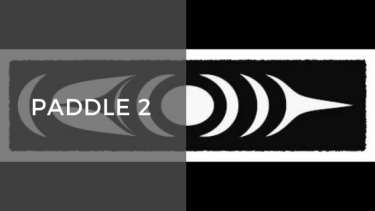
Students will learn about symbols of Coast Salish People, the paddle, the canoe and the cedar tree. Students will learn about the Coast Salish eye design and assemble a paddle keychain to keep.
Classroom Preparation:
- Laptop and projector with speakers is required
- Desks cleared
Students will need:
- Materials provided by the Indigenous Centre
- Pencils & eraser
Time Frame:
75 minutes
2024 Canoe Pulling and Traditions - Grades 8-12.pdf
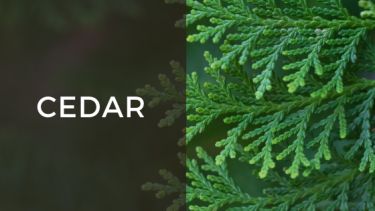
The presenter will explain how important the cedar tree was to the Stó:lō people. A video that demonstrates how Stó:lō people respectfully harvest the cedar tree will be shown. Many items created from the cedar tree will be shown to the classroom.
A worksheet will be sent to the teacher to complete with their class.
Classroom Preparation:
- Laptop and projector with speakers are required
- Access to a printer to print worksheet for students
Students will need:
- Pencil
Time Frame:
1 hr. 15 min.
Additional Resources:
This video depicts the traditions of cedar.
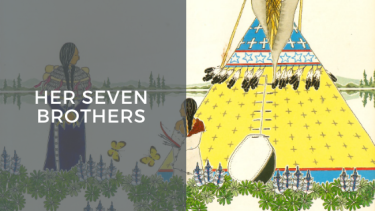
The presenter will share a Cheyenne story Her Seven Brothers, by Paul Goble, that tells of the origin of the Big Dipper for the Cheyenne people.
A worksheet will be sent to the teacher to complete with their class.
Classroom Preparation:
- Laptop and projector with speakers is required
Time Frame:
60 minutes
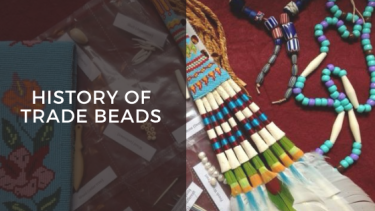
Students will learn about the pre-contact and post contact history of trade beads in Canada. Students will also learn the importance of beading to Indigenous peoples of Canada. Students will assemble a beaded item to keep.
Materials required will be sent to the school by the Indigenous Centre prior to this presentation.
Classroom Preparation:
- Laptop and projector with speakers is required
- Desks cleared
Time Frame:
Elementary School: 60 minutes
Middle School: one scheduled block time
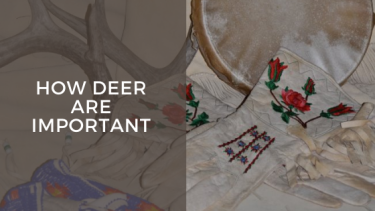
The students will compare the origins of everyday clothing and items to the origins of traditional items and clothing. The presenter will show clothing, shoes, medicine pouch, drum and other items created from deer hide and natural materials for the students to examine.
The presenter will leave a worksheet for the students to complete.
Classroom Preparation:
- Laptop with projector and speakers is required
Students will need:
- Pencil
- Worksheet to be printed by teacher
Time Frame:
60 minutes
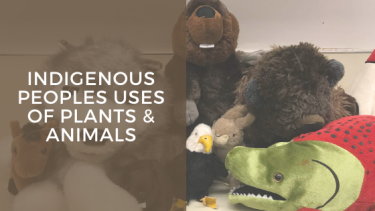
The presenter will communicate knowledge of plants and animals that are important to Coast Salish people. The presenter will use photos, stuffed plants and animals to prompt student learning. The students will learn to sing a traditional song as well as learn a traditional dance.
Classroom Preparation:
- Laptop and projector with speakers is required
Time Frame:
45 minutes
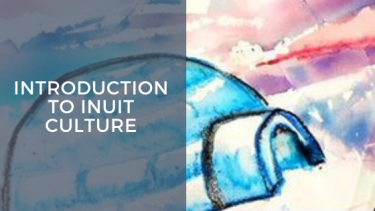
The presenter will communicate knowledge of Inuit people and their history in Canada. The presenter will use photos, artifacts and Traditional Inuit clothing to prompt student learning about Inuit culture. The students will get to create a watercolor picture of an igloo with the northern lights (Aurora Borealis) in the background. Students will experience a northern lights simulation while listening to a traditional story.
A worksheet will be sent to the teacher to complete with their class.
Classroom Preparation:
- Laptop and projector with speakers is required
Students Materials:
- Materials required for this presentation will be sent by the Indigenous Centre
Time Frame:
60 minutes
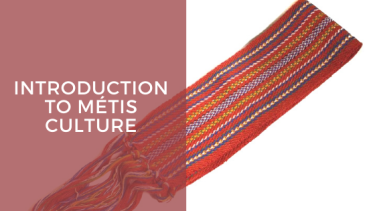
The presenter will communicate knowledge of Métis people and their history in Canada. Students will generate a class web on the contributions and traditions of the Métis people to Canadian culture. The presenter will use photos, artifacts and Traditional Métis clothing to prompt student learning about the Métis culture. The presenter will also show introductory videos of Métis people, their traditions and contributions to Canadian culture.
Classroom Preparation:
- Laptop and projector with speakers is required
Time Frame:
60 minutes
Videos:
Click here for the video "Métis Rosie"
Click here for the video "Métis Rhythms"
Additional Resources:
Click here for the video Metis Youth Express Yourself!
This is a link to Gabriel DuMont Institute that includes information on Metis people in Canada.
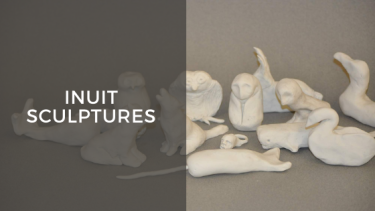
The presenter will introduce Inuit sculptures to the class through the use of Inuit stories.
Photos of Inuit sculptures will be shown and students will be asked to imagine the story that inspired the carving. The presenter will then lead the students through a variety of sculpting steps to create their own version of an Inuit sculpture. Once the sculptures have been created they will need to bake for at least 30 minutes. Please note, during the baking the sculptures cannot be left unattended. Time permitting; students may have time to write and share stories that they have created.
Classroom Preparation:
- Laptop and projector with speakers is required
- One or two ovens available for baking the sculptures for 30 minutes
- Cleared desks
Time Frame:
Elementary Schools: 3 hours
Middle Schools: 3 blocks
Inuit Sculptures Lesson Plan 2019.pdf
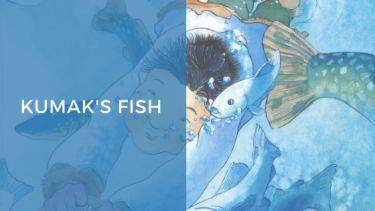
Students will listen to a humorous Inuit story, Kumak’s Fish - A Tall Tale from the Far North, written by Michael Bania. This story emphasizes the Inuit virtues of patience, cooperation and sharing. This is an interactive exhibit combining imagination and physical movement. The presenter will show Inuit replicas during the presentation. Students are best seated in a circle for the story and will return to their desks for a snow goggle design activity.
Classroom Preparation:
- Laptop and projector with speakers is required
- Cleared desk to complete activity
Students will need:
- Scissors
- Felts/Pencil Crayons/Crayons
Time Frame:
60 minutes
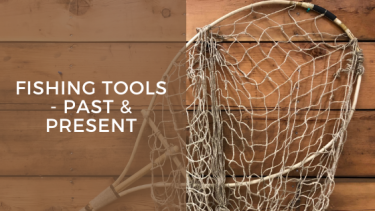
The presenter will show a collection of five traditional Stó:lō fishing tools and artifacts for students to examine. Students will compare modern fishing tools to the traditional tools using a Venn diagram. Students will also discuss how traditional fishing technologies have influenced today’s society and the environmental impact.
A worksheet will be sent to the teacher to complete with their class.
Classroom Preparation:
- Laptop and projector with speakers are required
- Access to a printer to print worksheet for students
Students will need:
- Pencil
Time Frame:
90 minutes
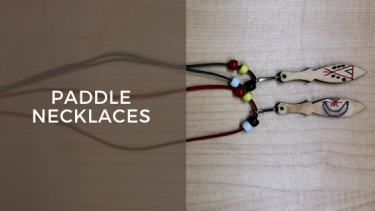
Students will learn about the Four Directions and a symbol of Coast Salish People: the Paddle. Students will assemble a paddle necklace to keep and then draw a personal symbol onto their necklace.
Classroom Preparation:
- Laptop and projector with speakers is required
- Desks cleared
Students will need:
- Materials provided by the Indigenous Centre
- Pencil & erasers
Time Frame:
60 minutes
Additional Resources:
This video describes the process of youth learning about pictographs in the Coast Salish Territory.
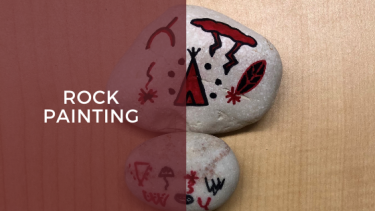
Students will learn about the significance and history of pictographs and traditional rock paintings. They will decipher what they believe some pictographs communicated. Students will use a felt pen to draw a design on a polished rock. Examples of common pictograph designs will be sent to the teacher to print. Students will make their own design on rocks.
Materials required will be sent to the school by the Indigenous Centre prior to this presentation.
Classroom Preparation:
- Laptop and projector with speakers is required
- Desks cleared
Students will need:
- Materials provided by the Indigenous Centre
Time Frame:
60 minutes
Additional Resources:
This video describes the process of youth learning about pictographs in the Sto:lo Nation.
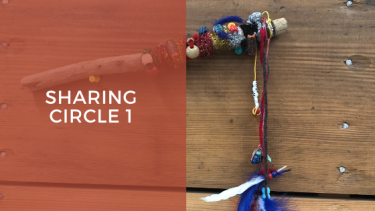
The students will be introduced to the history, the purpose and the expectations of a sharing circle. Using the teachings of the sharing circle, the students will be encouraged to share information with their peers. The presentation emphasizes the use of patience and teaches the students respect for others while they are waiting their turn to speak.
A worksheet will be sent to the teacher to complete with their class.
Classroom Preparation:
- Laptop and projector with speakers is required
- Students to be sitting in a circle
Students will need:
- pencil
- crayons
- eraser
Time Frame:
60 minutes
Additional Resources:
Talking Circles Fact Sheet.
Teacher Toolkit - Talking Circles.
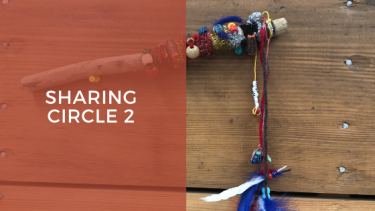
The students will be introduced to the history, the purpose and the expectations of a sharing circle. Using the teachings of the sharing circle, the students will be encouraged to share information with their peers. The presentation emphasizes the use of patience and teaches the students respect for others while they are waiting their turn to speak.
Classroom Preparation:
- Laptop and projector with speakers is required
- Students to be sitting in a circle
Students will need:
- Print out of the Coast Salish Eye (to be printed out by teacher)
Time Frame:
60 Minutes
Additional Resources:
Talking Circles Fact Sheet.
Teacher Toolkit - Talking Circles.
Sharing Circle 2 Lesson Plan 2019.pdf
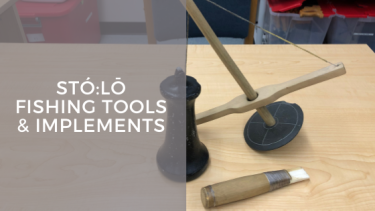
The presenter will show a collection of traditional Stó:lō fishing tool replicas. Students will be given time to examine each tool and record information on a worksheet provided. The presenter will complete the presentation by providing information on each tool.
A worksheet will be sent to the teacher to complete with their class.
Classroom Preparation:
- Laptop with projector and speakers is required
- Teacher can have students complete the worksheet alone or place the students into small groups
Students will need:
- Pencil
- Worksheet to be printed by teacher
Time Frame:
3 hours
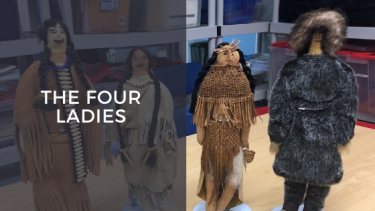
The presenter will show four traditional dolls representing four major Indigenous land regions. Students will view the map of Canada showing the areas for Eastern Woodland, Plains, Northwest Coast and Inuit. Students will be guided to the connection of natural resources found in each region to the clothing, shelter, food & transportation used by each of the dolls.
A worksheet will be sent to the teacher to complete with their class.
Classroom Preparation:
- Laptop and projector with speakers is required
- Desks cleared
Students will need:
- Pencil
- Glue stick
- Scissors
Time Frame:
60 minutes
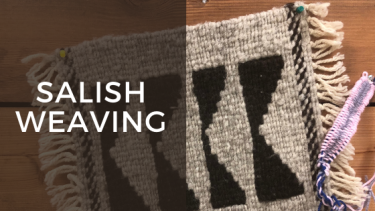
**The looms can be booked through the Ray & Millie Silver Library**
Warped small loom for each student (maximum 17 looms = 34 students) to produce their own weaving.
The presentation will begin with an explanation on the importance of Salish weaving to the Stó:lō people and explain the traditional weaving process from gathering the fleece to wearing the blankets. Examples of weaving patterns will be available for students to examine.
Elementary students will complete a small weaving that could be used as a personal wall hanging or as a gift. Middle School Students will complete a personal woven bracelet/cuff.
Materials required will be sent to the school by the Indigenous Centre prior to this presentation.
Classroom Preparation:
- Laptop and projector with speakers is required
- Desks cleared
- Teacher may consider inviting one or two parents to assist students with their weaving.
- Students arranged into pairs
Students will need:
- Materials provided by the Indigenous Centre
Time Frame:
Elementary Schools: one full day
Middle Schools: 3 scheduled block times are needed
Salish Weaving Lesson Plan 2019.pdf
Exploring Patterns Through Coast Salish Weaving Lesson Plan.pdf
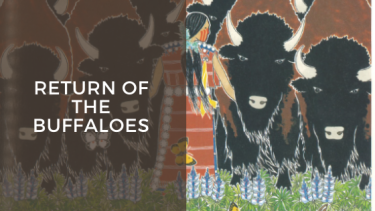
The Presenter will read a Lakota story from the Plains region, The Return of the Buffaloes, written and illustrated by Paul Goble. Students will build and colour a paper parfleche (a traditional container made from rawhide).
A worksheet will be sent to the teacher to complete with their class.
Classroom Preparation:
- Laptop and projector with speakers is required
- Desks cleared
Students will need:
- Scissors
- Glue stick
- Pencil crayons/crayons/felts
Time Frame:
60 minutes
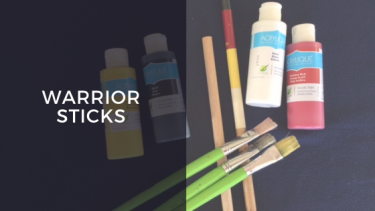
Using wooden doweling, students will make their own warrior stick. The four colours on the stick (black, red, yellow and white) symbolize a process for problem solving. This presentation is recommended for the beginning of the school year as an ongoing problem-solving tool to refer to.
Materials required will be sent to the school by the Indigenous Centre prior to this presentation.
Classroom Preparation:
- Laptop and projector with speakers is required
- Desks cleared
Students will Need:
- Ruler
- Pencil/pencil crayons/ crayons
Time Frame:
90 minutes